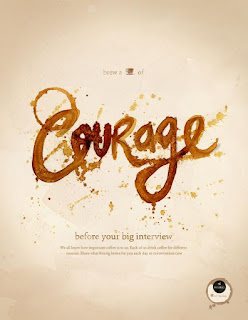 After
hearing Beyoncé’s new album #LEMONADE on Saturday I could not help myself but to
run to the computer and write this blog post right away on it. #LEMONADE is
causing a media frenzy. Let me back up a bit and discuss why that is. So
Beyoncé drops her new album but not with only tracks, but with a VISUAL ALBUM.
Let me just say it is AMAZING, but not everyone is thinking that. In Beyoncé’s
one hour and 5 minute visual album she insinuates that her also famous husband
Jay-Z has been cheating on her and in one of her songs "Sorry" she
mentions a line saying "He better call Becky with the good hair."
When Beyoncé’s "Beyhive" (name for her followers) heard this they
went crazy assuming "Becky" was the girl he had cheated on Beyoncé
with. People did a little digging and started attacking another famous
female Rachel Roy because they were sure she was “Becky with the good hair.”
Now there are two reasons this is stirring up the popular culture world. 1) Because
Beyoncé aired her husband’s dirty laundry out in her entire album plus dragged
his mistress down too, and 2) People are not happy with Beyoncé’s strict focus
on race in her visual album. Becky for one is a racist term for a white woman,
which many people heaved Beyoncé for. In Beyoncé’s visual album she represents “the
African American women in the American psyche” (Carpentier) but not just
African America women she’s representing feminism. Beyoncé strictly uses
African American woman, and southern locations to make her point. Many celebrities
have given their input on Beyoncé’s new album so head over to twitter for some
more opinions. Also if you haven’t heard it yet, I encourage everyone to go
watch/listen to it and even give your opinions in the comments section. If you
want to read more up on it below is a link to a website discussing how
Beyoncé's Lemonade became a pop culture phenomenon.
After
hearing Beyoncé’s new album #LEMONADE on Saturday I could not help myself but to
run to the computer and write this blog post right away on it. #LEMONADE is
causing a media frenzy. Let me back up a bit and discuss why that is. So
Beyoncé drops her new album but not with only tracks, but with a VISUAL ALBUM.
Let me just say it is AMAZING, but not everyone is thinking that. In Beyoncé’s
one hour and 5 minute visual album she insinuates that her also famous husband
Jay-Z has been cheating on her and in one of her songs "Sorry" she
mentions a line saying "He better call Becky with the good hair."
When Beyoncé’s "Beyhive" (name for her followers) heard this they
went crazy assuming "Becky" was the girl he had cheated on Beyoncé
with. People did a little digging and started attacking another famous
female Rachel Roy because they were sure she was “Becky with the good hair.”
Now there are two reasons this is stirring up the popular culture world. 1) Because
Beyoncé aired her husband’s dirty laundry out in her entire album plus dragged
his mistress down too, and 2) People are not happy with Beyoncé’s strict focus
on race in her visual album. Becky for one is a racist term for a white woman,
which many people heaved Beyoncé for. In Beyoncé’s visual album she represents “the
African American women in the American psyche” (Carpentier) but not just
African America women she’s representing feminism. Beyoncé strictly uses
African American woman, and southern locations to make her point. Many celebrities
have given their input on Beyoncé’s new album so head over to twitter for some
more opinions. Also if you haven’t heard it yet, I encourage everyone to go
watch/listen to it and even give your opinions in the comments section. If you
want to read more up on it below is a link to a website discussing how
Beyoncé's Lemonade became a pop culture phenomenon.http://www.theguardian.com/music/2016/apr/26/beyonce-lemonade-jay-z-becky-pop-culture




